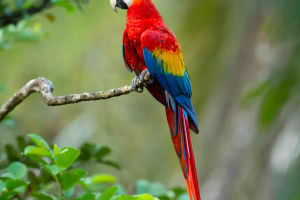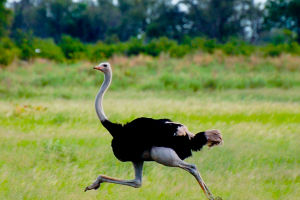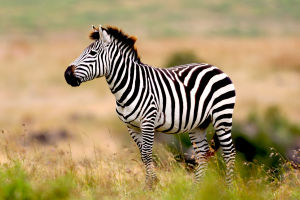Every year, flocks of birds travel thousands of kilometers, often crossing oceans and continents, to reach warmer places for winter or better breeding grounds in spring. But how do they manage this without maps or even a smartphone?
We've all struggled with directions from time to time—yet these birds seem to know exactly where to go. Today, let's explore the incredible navigation system hidden inside migratory birds.
What Are Migratory Birds?
Migratory birds are species that move between regions based on seasons. For example, swallows, geese, and Arctic terns fly thousands of kilometers each year. The Arctic tern, in particular, holds the record—it can travel over 70,000 kilometers annually between the Arctic and the Antarctic!
But this journey isn't just long—it's full of challenges. So how do birds know when to leave, where to go, and how to get there? The answer is a fascinating mix of biology, instinct, and nature's invisible signals.
Internal route: Magnetic Senses
One of the most amazing tools birds use is their ability to sense Earth's magnetic field. According to Dr. Henrik Mouritsen, a leading researcher in bird navigation, birds have special cells—possibly located in their eyes or beaks—that help them "see" the magnetic field. This ability acts like a built-in compass, giving them a sense of direction even when the sky is cloudy or landmarks are missing.
Interestingly, some birds even seem to combine visual cues with magnetic data, like using a compass and map at the same time. This helps them stay on course during long-distance flights.
Stars, Sun, and Light
Many birds migrate at night, using the stars as guides. In the 1960s, scientists placed birds inside planetariums and discovered that they adjusted their direction based on star patterns. This shows that birds can read the night sky like an ancient sailor.
For daytime flyers, the sun is a reliable tool. Birds can track the sun's movement and use it to keep direction, adjusting for time of day with their internal biological clocks.
Landmarks and Smell? Yes!
As birds get closer to their destination, many begin to rely on familiar landmarks—rivers, coastlines, and even cities. Studies on homing pigeons show that visual memory plays a big role in short-range navigation.
Even more surprisingly, some species may use smell to navigate. Research by Dr. Gabrielle Nevitt found that seabirds can detect ocean smells to locate specific areas, especially around nesting sites. It's like having a scent-based map built into their brain!
Inherited Instincts and Learning
Not all birds need to be taught how to migrate—many are born with the instinct. Young birds raised in isolation still try to migrate in the correct direction. However, experienced birds in the flock help improve accuracy over time. It's a perfect balance of nature and learning.
Flocks often fly in V-shaped formations to conserve energy. Leaders shift positions so no one gets too tired, showing that migration is not just about direction—it's also about teamwork and survival.
Challenges Along the Way
Migration is not easy. Birds face storms, predators, exhaustion, and human-created obstacles like buildings and light pollution. Some get lost or never make it. But despite these challenges, millions complete their journeys each year.
Satellite tracking and tiny data loggers have helped scientists understand migration better. Thanks to this technology, we now know just how incredibly precise birds are. Many return to the same tree or rooftop year after year, as if they had saved it in their memory.
How Can We Help?
As we learn more about how birds migrate, it becomes clear that they need safe skies and resting places. Habitat destruction, pollution, and climate change can confuse or endanger migratory routes.
By supporting bird-friendly spaces—like wetlands, forests, and green rooftops—we can help these feathered travelers reach their destinations safely. Even something as simple as turning off lights during migration seasons can make a big difference.
Let's Appreciate the Journey
Next time you see birds flying in formation or hear the call of geese overhead, take a moment to appreciate the mystery behind it. These creatures are performing one of the great wonders of the natural world, using tools we're only beginning to understand.
What Do You Think?
Do you believe birds might be even smarter than we've thought? Have you ever seen a migration in person? We'd love to hear your story. Let's keep asking questions and learning from the incredible natural systems around us—because even without app-based navigation, nature never stops finding its way.


